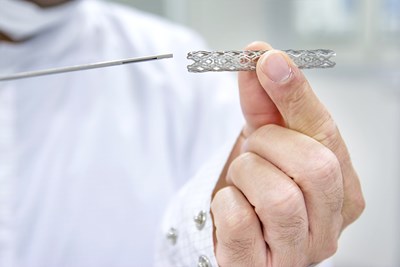Angioplasty is a procedure used to help eliminate blockages in arteries that have become clogged and narrowed. Here is a look at 10 terms associated with this treatment that you should be familiar with.
- Arteries: These are blood vessels that are responsible for the flow of oxygen-rich blood from the heart to other tissues and organs in the body. Arteries are smooth, muscular tubes lined with three layers of tissue. As we age, arteries can narrow or become clogged with plaque. An angioplasty procedure treats these obstructed vessels by widening and unblocking them, thus restoring normal blood flow.
- Plaque: When cholesterol combines with fat, calcium, and other substances in the blood, it forms plaque. Buildup of plaque in the artery walls can narrow and clog your arteries. Plaque hardens and impairs normal blood flow or blocks it altogether, increasing the risk of heart attack or stroke.
- Peripheral artery disease (PAD): Blood flow to the limbs of the body is reduced due to narrow and hardened arteries. Loss of effective blood flow to the legs can put you at risk for gangrene and leg amputation. PAD is often treated with an angioplasty to widen narrowed arteries and restore blood flow.
- Contrast dye: These are chemical substances that enhance and increase the quality of images, allowing a doctor to better see how your body is working. Contrast dye is used to differentiate between parts of that body that have a similar structure. During an angioplasty, an X-ray is used to assist the doctor in guiding the catheter through your blood vessels. You will be given contrast dye so that imaging is clearer on the X-ray.
- Catheter: This is a long, thin tube. During an angioplasty, a trained specialist treats the obstructed artery with a balloon catheter. The balloon is attached to the tip of the catheter and inflated to flatten the plaque buildup and widen the artery. The catheter is inserted through a small incision in your thigh or arm and then moves through your blood vessels until it reaches the artery.
- Stent: This is a small mesh tube used to treat narrow or weakened arteries by keeping the artery open. A stent is sometimes placed during an angioplasty after your artery has been unclogged and widened. A stent will remain in place to prevent the artery from becoming obstructed again.
- Blood clot: This is a mass of coagulated blood. Clotting is a critical part of the healing process, but it becomes a serious problem when clots form in an artery or vein. The risk of a blood clot is highest the first month following your surgery. A doctor may prescribe blood thinners to keep a clot from forming.
- Restenosis: It is possible for a treated artery to become narrow again, and this is known as restenosis. A recurrence is most often seen in cases where a stent was not placed. If narrowing happens again, another surgery may be required.
- Dissection: Damaging to the lining of the artery, dissection is a serious, but rare risk of angioplasty.
- Embolization: Plaque particles can sometimes break free and build up downstream from a treated artery, causing new buildup. This embolization process is another serious, but rare, risk of angioplasty.



